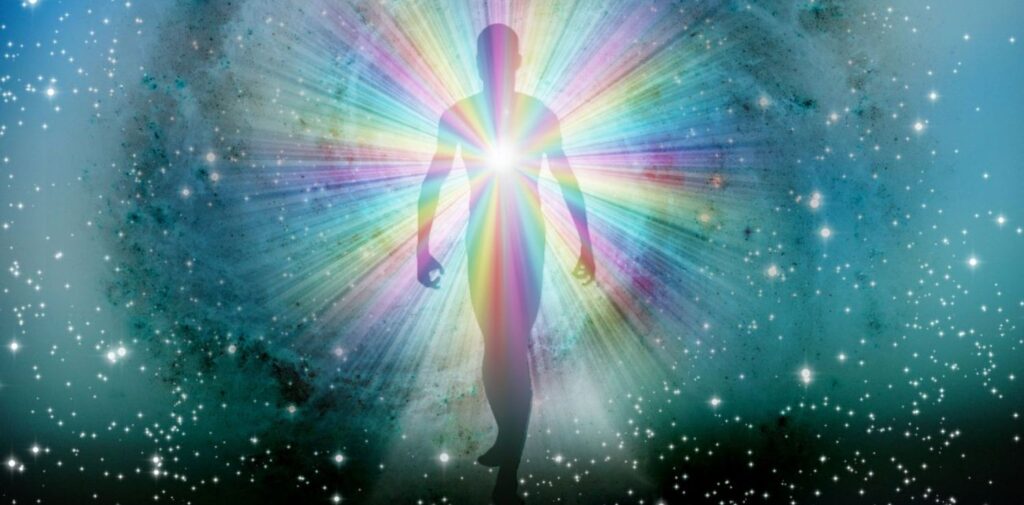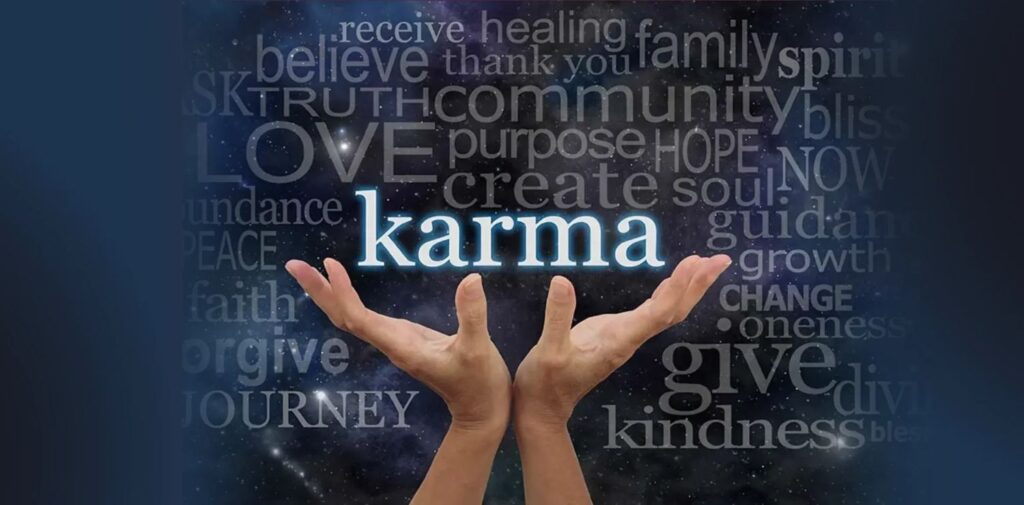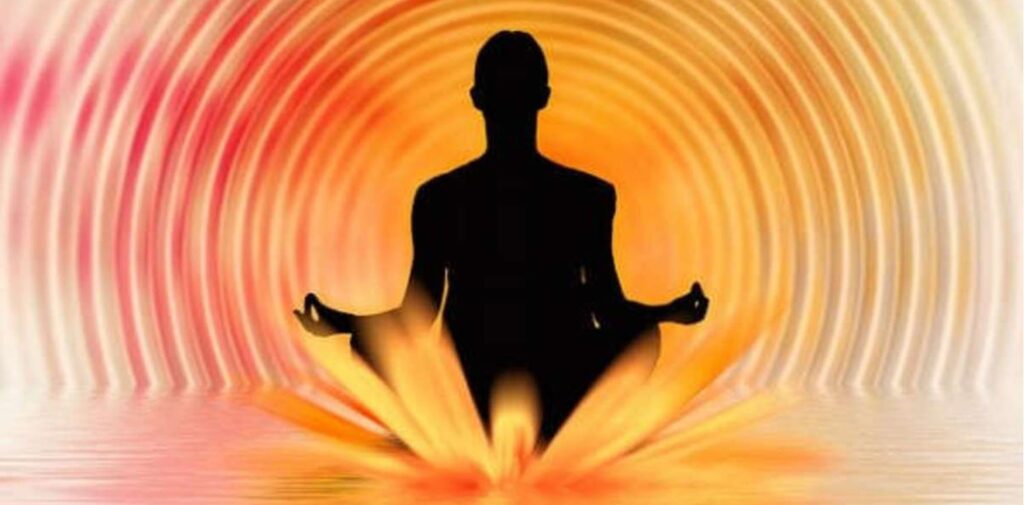In Hinduism, the ultimate goal of human life is to attain Moksha, which is the liberation from the cycle of birth, death, and rebirth. This cycle, known as Samsara, is believed to be driven by the actions and desires (called karma) accumulated in previous lifetimes. Moksha represents the final release from this cycle, where the soul attains unity with the divine and is freed from all worldly suffering.
In this article, we will explore the concept of Moksha in simple terms—what it is, how it works, and how one can achieve it according to the teachings of Hinduism.
What is Moksha?
Moksha is a Sanskrit word that means “liberation” or “freedom.” It refers to the liberation of the soul (called Atman) from the endless cycle of Samsara. Samsara, in Hindu philosophy, refers to the continuous cycle of birth, death, and rebirth that all living beings experience. This cycle is governed by the law of karma, which suggests that our actions, both good and bad, shape our future lives.
When a soul attains Moksha, it is no longer bound by the laws of karma, nor is it subject to the cycle of birth and death. The soul becomes one with the Brahman (the ultimate reality or divine source of the universe). Moksha is considered the highest state of spiritual attainment, where the individual soul realizes its true nature and is free from all suffering and limitations.

The Cycle of Samsara
Before understanding how Moksha is attained, it’s important to understand the concept of Samsara—the cycle of birth, death, and rebirth. According to Hinduism, all living beings are part of an eternal cycle. When a person dies, their soul (Atman) does not end. Instead, it is reborn in a new body, and this process continues until the soul reaches a state of perfection and spiritual realization.
The actions that a person performs in each lifetime, known as karma, influence their next life. Positive actions lead to a better life, while negative actions may lead to suffering in future births. This process of birth, death, and rebirth continues endlessly, unless the soul breaks free from the cycle by attaining Moksha.
The Importance of Karma
Karma is a key concept in understanding Moksha. In simple terms, karma refers to the law of cause and effect. Every action we perform—whether physical, verbal, or mental—creates an impact that will come back to us in some form. Good deeds and righteous actions generate positive karma, while harmful or negative actions create bad karma.
The idea is that as long as a person continues to accumulate karma (good or bad), they will remain in the cycle of Samsara. Even if a person lives a virtuous life in one lifetime, their unaddressed desires and unresolved karmic patterns from past lives will continue to affect their future existences.
Therefore, Moksha is attained when a person is able to purify their karma and stop accumulating new karma. This happens through spiritual growth, self-realization, and breaking free from the attachments and desires that bind them to the material world.

How to Achieve Moksha
Achieving Moksha is the ultimate spiritual goal, but it is not an easy task. It requires a deep understanding of the self, detachment from worldly desires, and a strong connection to the divine. Hindu philosophy offers several paths (known as yogas) to achieve Moksha. Each path helps individuals in different ways to realize their true nature and achieve liberation.
Here are the main paths to Moksha:
- Jnana Yoga (Path of Knowledge): Jnana Yoga is the path of wisdom and knowledge. It involves deep contemplation, self-inquiry, and understanding the true nature of the self. The core teaching of Jnana Yoga is the realization that the individual soul (Atman) is not separate from the universal soul (Brahman). By understanding the non-dual nature of existence, the seeker can transcend the illusion of separateness and realize their oneness with the divine. A key practice in Jnana Yoga is asking questions like “Who am I?” and “What is the nature of reality?” Through self-inquiry, one gradually eliminates ignorance (Avidya) and experiences spiritual enlightenment.
- Bhakti Yoga (Path of Devotion): Bhakti Yoga is the path of devotion and love for God. This path involves surrendering oneself to the divine and dedicating all actions to God with pure love and devotion. Through prayer, chanting, and worship, the devotee seeks to develop a deep and personal connection with the divine. By surrendering their ego and attachments, the devotee can transcend the cycle of Samsara and experience Moksha. Bhakti Yoga is accessible to everyone, as it does not require intellectual abilities or advanced practices. It is a path of love, where the devotee’s heart becomes the means of liberation. Famous figures like Ramanuja, Mirabai, and Tulsidas have followed this path of devotion.
- Karma Yoga (Path of Selfless Action): Karma Yoga is the path of selfless action. It teaches that by performing one’s duties without attachment to the outcomes, a person can purify their heart and attain Moksha. This means doing good actions, helping others, and working for the welfare of society without expecting rewards or results. In Karma Yoga, every action is performed as an offering to the divine. By detaching from the results of actions and focusing on the right intention, one can remove the binding effects of karma and gradually move toward liberation.
- Raja Yoga (Path of Meditation): Raja Yoga is the path of meditation and mental discipline. It involves practicing deep meditation to control the mind and senses, allowing the individual to attain inner peace and self-realization. Through practices like pranayama (breathing exercises), asana (yoga postures), and dhyana (meditation), the practitioner learns to still the mind and connect with their inner divine nature. Raja Yoga is often considered the most systematic approach, as it provides practical tools for spiritual growth. The Yoga Sutras of Patanjali are a key text in this tradition, providing a detailed roadmap for achieving self-mastery and liberation.
Role of Detachment and Self-Realization
One of the most important aspects of achieving Moksha is detachment. Detachment does not mean rejecting the world or withdrawing from society; rather, it means not being overly attached to the fruits of one’s actions or the material pleasures of life. The key idea is to live a balanced life, fulfilling one’s duties and responsibilities, but not allowing attachment to possessions, relationships, or desires to dictate one’s happiness.
Self-realization is the realization that the individual soul (Atman) is the same as the Supreme Soul (Brahman). This knowledge brings freedom from the illusion of separateness and helps transcend the ego. When a person understands their true nature and recognizes that they are not the body, mind, or emotions, they are able to break free from the cycle of rebirth and attain Moksha.

Moksha in Different Hindu Traditions
Different Hindu traditions describe Moksha in slightly different ways, but the underlying principle remains the same: freedom from the cycle of birth and death. In some schools of thought, Moksha is seen as a state of eternal bliss, while in others, it is described as a state of merging with the divine consciousness.
For example, in Advaita Vedanta, Moksha is the realization of non-duality, where the individual soul merges completely with Brahman. In Vishishtadvaita Vedanta, Moksha is the union with the divine while maintaining the individuality of the soul. In Bhakti traditions, Moksha is often described as eternal closeness and service to the divine, especially in the form of a personal god.
Conclusion: Concept of Moksha
Moksha is the ultimate goal in Hinduism—the liberation from the cycle of birth, death, and rebirth. It is the realization of one’s true nature and the attainment of oneness with the divine. Through paths such as Jnana Yoga (knowledge), Bhakti Yoga (devotion), Karma Yoga (selfless action), and Raja Yoga (meditation), individuals can free themselves from the bonds of karma and attain this state of eternal peace and freedom.
Achieving Moksha is not easy, and it requires dedication, spiritual discipline, and self-realization. However, the pursuit of Moksha provides a deeper meaning to life and the promise of liberation from all suffering, ultimately leading to the experience of true bliss and divine unity.




